Crate Training 101: How to Do It Right
Transparency matters to us! This post may include affiliate links, which means we earn a small commission if you make a purchase through our recommendations. This is at no additional cost to you. Read our full affiliate disclosure.
You see that look in your dog’s eyes when bedtime approaches, and they know they’ll be spending the night alone in their sleeping area. Some dogs eagerly head to their crate, tail wagging, while others seem to disappear under the couch or behind the curtains. The difference between these two reactions often comes down to how crate training was introduced and executed in their early days.
When done properly, crate training creates a safe haven where dogs feel secure and comfortable, much like how you might retreat to your own bedroom for peace and quiet. However, when rushed or implemented incorrectly, the crate can become a source of anxiety and stress rather than comfort. The process requires patience, consistency, and understanding of your dog’s natural denning instincts, which can take weeks or even months to develop fully.
The good news is that with the right approach, almost any dog can learn to love their crate as their personal sanctuary, making life easier and safer for both of you.
Key Takeaways
- Safe Haven Creation: The crate serves as a comfortable den space that should never be used for punishment, allowing dogs to retreat when they need quiet time or rest.
- Proper Sizing Matters: Choose a crate that allows your dog to stand, turn around, and lie down comfortably without being so large that they can soil one area and sleep in another.
- Positive Association Building: Feeding meals inside the crate and using treats helps create pleasant memories and encourages willing participation.
- Gradual Progression Required: Success comes from slowly increasing crate time rather than forcing long periods from the start, which prevents anxiety and builds confidence.
- Patience Prevents Problems: Rushing the process or forcing entry can create lasting negative associations that make training much more difficult.
- Multiple Benefits: Crate training supports house training, reduces destructive behavior, and provides security during travel or stressful situations.
- Time Limits Apply: Puppies under six months should not be crated for more than 3-4 hours at a time due to bladder control limitations, while adult dogs also need regular breaks.

Common Crate Training Mistakes and How to Avoid Them
Learning what not to do can be just as valuable as understanding proper techniques. Many well-intentioned dog parents inadvertently create problems that make crate training more challenging than necessary. By recognizing these common pitfalls, you can set both yourself and your furry family member up for success from the beginning. The most frequent mistakes involve using the crate incorrectly, choosing the wrong size, or moving too quickly through the training process. Understanding these issues helps you approach training with confidence and clarity.
1. Using the Crate as Punishment
Never use the crate as a place to send your dog when they’ve misbehaved. This creates negative associations that can undo weeks of positive training work and make your dog fearful of entering their space. When dogs associate the crate with punishment or your displeasure, they may resist entering voluntarily and become anxious when they see you approaching with the intention of crating them. Instead, the crate should always represent safety, comfort, and positive experiences like meals, treats, and rest time.
2. Choosing the Wrong Crate Size
The ideal crate allows your dog to stand up without hitting their head, turn around comfortably, and lie down with legs extended. A crate that’s too small causes discomfort and stress, while one that’s too large can actually slow house training progress because dogs may soil one end and sleep in the other. For growing puppies, consider purchasing an adult-sized crate with dividers that you can adjust as they grow, or start with an appropriately sized crate and upgrade as needed.
3. Forcing the Dog into the Crate
Physical force or coercion creates fear and resistance that can last long after the initial negative experience. Dogs who are pushed, pulled, or carried into crates often develop strong aversions to the space and may panic when they see the crate door opening. Positive encouragement through treats, toys, and patience produces much better long-term results. Allow your dog to make the choice to enter, even if it takes longer initially.
4. Leaving the Dog in the Crate Too Long
Extended crating can lead to physical discomfort, anxiety, and behavioral problems. Adult dogs generally shouldn’t be crated for more than 6-8 hours at a stretch, and puppies need much more frequent breaks for bathroom needs and social interaction. Dogs are social animals who need mental stimulation, exercise, and companionship throughout the day. Excessive crating can also lead to muscle stiffness and make dogs more likely to have accidents when finally released.
5. Not Making the Crate Comfortable and Inviting
A bare, cold crate isn’t appealing to most dogs. Adding comfortable bedding, favorite toys, or special treats helps create positive associations. However, be mindful of your individual dog’s habits; some dogs may chew or soil bedding initially, in which case you might need to start with just a comfortable mat or towel. The location of the crate also matters; placing it in a quiet corner where your dog can still see family activity often works better than isolating it in a separate room.
6. Responding Prematurely to Whining or Barking
While it’s natural to want to comfort a distressed dog, immediately responding to vocalizations can teach your dog that making noise gets them released from the crate. This creates a problematic pattern where the dog learns to demand release through persistent noise. Instead, wait for moments of quiet before opening the crate door, which teaches patience and calm behavior. However, always consider whether your dog genuinely needs a bathroom break or is experiencing distress that requires attention.
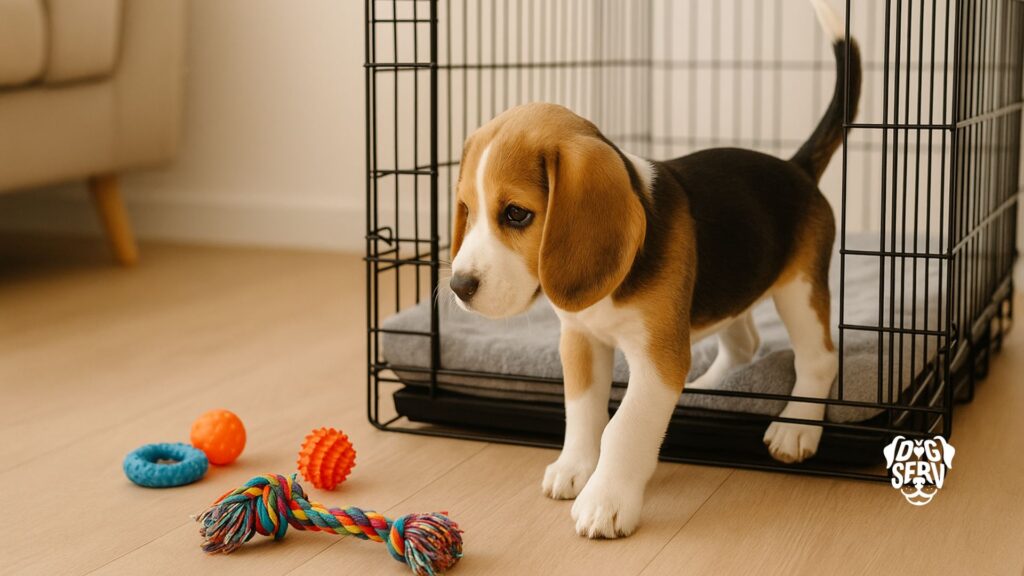
7. Rushing Crate Training Progression
Moving too quickly through training phases can overwhelm your dog and create setbacks that take much longer to overcome. Each dog progresses at their own pace, and some may need several weeks to feel completely comfortable with each new step. Building a solid foundation at each stage prevents anxiety and ensures long-term success. If your dog shows signs of stress or resistance, it’s usually better to step back to a previous comfort level rather than pushing forward.
Practical Tips for Successful Crate Training
Creating a positive crate training experience requires strategy, patience, and consistency. The most successful approaches focus on making the crate an appealing destination rather than a requirement your dog merely tolerates. Start by placing the crate in a common area where your dog can explore it freely without pressure. Leave the door open initially and allow natural curiosity to draw your dog inside.
Feed your dog’s meals inside the crate to build positive associations with the space. Start with the food bowl at the back of the crate while keeping the door open, then gradually begin closing the door for short periods while your dog eats. This technique works because dogs associate the crate with something they already enjoy and need.
Keep initial training sessions brief and enjoyable. Begin with just a few minutes of crate time and slowly increase duration as your dog becomes more comfortable. Use high-value treats or special toys that only come out during crate time to make the experience feel rewarding rather than restrictive.
Establish a consistent routine that helps your dog predict and prepare for crate time. Many dogs respond well to a specific command or cue that signals crate time, such as “kennel up” or “go to bed.” Consistency in timing, commands, and rewards helps dogs understand expectations and reduces anxiety.
Schedule regular bathroom breaks and exercise sessions, especially for puppies. Young dogs need frequent opportunities to relieve themselves and burn energy. A tired, well-exercised dog is more likely to rest quietly in their crate than one with pent-up energy and a full bladder.
Consider the crate’s location carefully. Placing it where your dog can still feel connected to family activity often works better than complete isolation. Many dogs prefer being able to see or hear their family members even while resting in their private space.
Celebrate small victories and maintain realistic expectations. Some dogs adapt to crate training within days, while others may need weeks or months to feel completely comfortable. Progress isn’t always linear, and temporary setbacks are normal parts of the learning process.

Real-Life Applications
Crate training extends far beyond basic house training and provides practical benefits throughout your dog’s life. During car travel, a properly crate-trained dog can ride safely and calmly in a secured crate, reducing driver distraction and protecting your pet in case of sudden stops or accidents. Many hotels and vacation rentals also require that pets be crated when left alone in rooms.
Veterinary visits become much easier when your dog is comfortable being confined. Dogs who are used to crates experience less stress during medical procedures or overnight stays at animal hospitals. This familiarity with enclosed spaces can also help during grooming appointments or other situations where temporary confinement is necessary.
At home, crates provide a management tool for busy households. When you have guests who aren’t comfortable around dogs, or during noisy events like parties or construction work, the crate offers your dog a quiet retreat where they can feel secure. This prevents overstimulation and gives both you and your dog peace of mind.
Crate training also supports boundary respect without creating fear. Dogs learn that they have a designated space that belongs to them, which can reduce territorial behaviors and make them more accepting of rules and limitations in other areas of the house. This self-control often translates to better behavior in various situations.
For multi-dog households, individual crates can prevent resource guarding around food, toys, or sleeping areas. Each dog has their own safe space where they don’t need to compete or worry about intrusion from other pets. This can significantly reduce household tension and make integration of new pets smoother.
Product Recommendations
Your dog’s crate journey is about to get a major upgrade! Think of these products as the difference between sleeping on a park bench and checking into a five-star hotel. We’ve assembled the essentials that will transform your pup’s crate from “acceptable confinement space” to “personal luxury suite that they never want to leave.”
Time to turn that metal box into a tail-wagging paradise!
- MidWest Homes for Pets Dog Crate: This wire wonderland comes with more features than a Swiss Army knife, including a divider panel for growing puppies and a leak-proof pan that’s seen more accidents than a driving instructor’s car. The fold-and-carry design means you can pack it faster than your dog can destroy your favorite shoes. Warning: Your dog may start hosting neighborhood meetings inside and charging admission fees.
- KONG Classic Dog Toy: The red rubber fortress of solitude that has survived more chewing sessions than a stress ball at tax season. Stuff this bad boy with treats and watch your dog transform into a furry puzzle-solving genius who forgot they’re even confined. It’s like Netflix for dogs, but with peanut butter instead of monthly subscriptions. Caution: You may find yourself buying industrial quantities of peanut butter and explaining to cashiers that yes, it’s all for your dog.
- Orthopedic Memory Foam Dog Bed: Turn your dog’s crate into a sleep sanctuary that rivals your own mattress (and might actually be more comfortable). This cushy cloud of comfort makes crate time feel like a spa retreat rather than detention. Your dog will sleep so soundly they might start snoring louder than your Uncle Bob at Thanksgiving. Warning: You may catch yourself eyeing this bed enviously during your own sleepless nights.
- Snuggle Puppy Heartbeat Stuffed Animal: This genius invention mimics a littermate’s heartbeat and warmth, turning anxious whimpering into peaceful snoozing. It’s like having a therapy dog for your therapy dog, complete with a removable heating pack that stays warm longer than your interest in folding laundry. Caution: Your dog may become emotionally dependent on their new “sibling” and refuse to go anywhere without them.
- Treat Pouch: Because fumbling through your pockets while trying to reward good crate behavior is like trying to text while riding a roller coaster. This hands-free treat dispenser keeps rewards at the ready for those precious moments when your dog voluntarily enters their crate. Warning: You may start unconsciously reaching for treats to reward humans who follow simple instructions, leading to some very confused grocery store clerks.
These products won’t magically turn your escape artist into a crate-loving angel overnight, but they’ll certainly stack the odds in your favor. Remember, the goal is to make that crate so appealing that your dog starts sending you eviction notices from the couch. Happy crating, and may the paws be with you!
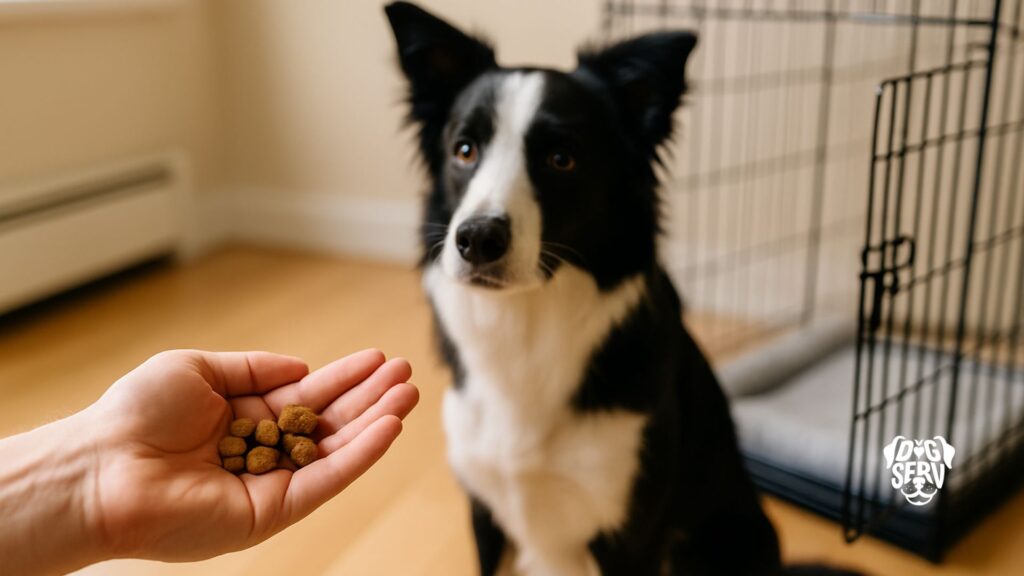
Further Reading
Ready to become a certified crate training wizard?
These articles will take your knowledge from “I think I know what I’m doing” to “I could write the manual on this stuff.” Fair warning: side effects may include sudden bursts of confidence and an irresistible urge to give unsolicited training advice to fellow dog parents at the pet store.
- The Power of Positive Reinforcement Dog Training: Learn why bribing your dog with treats is actually sophisticated behavioral psychology, not just giving in to their adorable manipulation tactics. This article explains how to turn yourself from a treat-dispensing pushover into a strategic behavior architect. Plot twist: your dog has been using positive reinforcement on YOU this whole time, and they’re surprisingly good at it.
- Training Stubborn Dogs: Proven Methods That Work: Think your dog has a PhD in selective hearing and a master’s degree in creative avoidance? This guide helps you crack the code of canine stubbornness without losing your sanity or your voice from repeating commands. Spoiler alert: they’ve been listening all along, they just have strong opinions about your suggestions.
- The Complete Guide to Dog Training at Home: Transform your living space into a canine academy without the hefty tuition fees or judgmental stares from other pet parents. This comprehensive guide covers everything from basic commands to advanced tricks that will make your neighbors wonder if you secretly hired a professional trainer. Bonus: Pajama pants are totally acceptable training attire.
- 10 Dog Training Techniques Every Owner Should Know: Master the essential techniques that separate the dog whisperers from the dog shouters. This article is like a cheat sheet for canine communication, minus the risk of getting caught and having to explain yourself to the teacher. Side effect warning: you may start unconsciously using these techniques on family members with surprisingly effective results.
- How to Train a Dog: The Complete Beginner’s Guide: Perfect for those who think “heel” is just something that hurts when you walk too much in new shoes. This beginner-friendly guide breaks down dog training into manageable steps that won’t make you feel like you need a doctorate in animal psychology. Reality check: your dog doesn’t care about your credentials, just your treat inventory and consistency game.
These articles are your secret weapons in the battle against canine chaos. Read them, absorb their wisdom, and prepare to become the kind of dog owner who makes it look effortless (even when you’re secretly bribing your pup with cheese).
Knowledge is power, but knowledge combined with patience and a well-stocked treat pouch? That’s pure magic.
Frequently Asked Questions About Crate Training a Dog
Q: How long can my dog safely stay in a crate?
A: Adult dogs can typically be crated for 6-8 hours maximum, while puppies under six months old should not exceed 3-4 hours due to their limited bladder control. Senior dogs or those with medical conditions may need more frequent breaks. Always provide fresh water and ensure your dog has had adequate exercise and bathroom opportunities before extended crating periods.
Q: What should I do if my dog cries or resists going into the crate?
A: Resistance often indicates that the training process has moved too quickly or that negative associations have formed. Step back to basics by making the crate more appealing with treats, comfortable bedding, and open-door exploration time. Never force entry, as this can worsen resistance. Consider consulting with a professional dog trainer if problems persist.
Q: Can multiple dogs share one large crate?
A: Generally, each dog should have their own crate to prevent competition, resource guarding, and to ensure each animal has adequate personal space. Sharing crates can lead to stress, especially around food or during times when dogs need to retreat and decompress. Individual crates also make house training more effective since you can better monitor each dog’s progress.
Q: Should I cover my dog’s crate?
A: Many dogs appreciate a cover that creates a more den-like atmosphere and reduces visual stimulation. Use breathable materials that don’t restrict airflow, and ensure your dog can still see out if they choose. Some dogs prefer partial coverage, while others like their crate completely enclosed. Observe your dog’s preferences and adjust accordingly.
Q: When can I stop using the crate?
A: Many dogs continue to use their crates voluntarily throughout their lives as a comfortable resting place. You can gradually increase freedom in the house as your dog demonstrates reliable house training and appropriate behavior when unsupervised. However, maintaining crate familiarity is beneficial for travel, veterinary visits, and emergency situations.
Long-Term Benefits and Owner Responsibility
Proper crate training creates lasting positive impacts that extend well beyond puppyhood. Dogs who are comfortable in crates tend to be more confident and adaptable in various situations throughout their lives. This confidence translates to better behavior during travel, veterinary visits, grooming appointments, and other potentially stressful situations.
The self-control and patience learned through positive crate training often improves overall obedience and responsiveness to commands. Dogs who learn to wait calmly in their crates typically develop better impulse control in other areas of training as well. This foundation makes advanced training and behavior modification more successful.
However, the benefits of crate training depend entirely on maintaining the positive associations you’ve built. Never allow the crate to become a punishment tool, even during challenging behavioral phases. Continue to make crate time pleasant with occasional treats, comfortable bedding, and respect for your dog’s need for quiet space.
As a responsible dog parent, commit to ongoing education about your dog’s changing needs. Puppies require different crating schedules than adult dogs, and senior pets may need modifications as their physical comfort and mobility change. Stay observant of your dog’s behavior and adjust your approach as needed to maintain their comfort and confidence.
Remember that successful crate training is an investment in your dog’s lifelong well-being. The security and self-control developed through proper crate training creates a more balanced, confident dog who can adapt to life’s changes with less stress. This benefits not only your dog but also strengthens the bond between you as you work together toward common goals.
Building Confidence Through Positive Leadership
Successful crate training represents more than just teaching your dog to accept confinement; it’s about building a foundation of trust and communication that will serve both of you throughout your years together. When approached with patience and consistency, crate training becomes an opportunity to show your dog that you’re a reliable, caring leader who provides security and comfort.
The skills you develop during crate training, such as reading your dog’s body language, timing rewards effectively, and maintaining consistency under pressure, will benefit every aspect of your relationship. Dogs thrive with clear expectations and gentle guidance, and the crate training process allows you to practice providing both in a low-stakes environment.
Remember that every dog progresses at their own pace, and comparing your experience to others can lead to frustration and rushed decisions. Some dogs embrace their crate within days, while others need weeks or months to feel completely secure. Your willingness to adapt your approach to your individual dog’s needs demonstrates the kind of thoughtful leadership that builds confidence and cooperation.
At DogServ, we understand that successful dog parenting comes from combining expert knowledge with genuine care for each individual dog’s unique personality and needs. Whether you’re navigating the early stages of crate training with a new puppy or helping an older dog adapt to this valuable life skill, having access to reliable guidance and quality products makes the journey smoother for everyone involved. Your commitment to positive, patient training methods creates the foundation for a lifetime of mutual trust and joy with your four-legged family member.
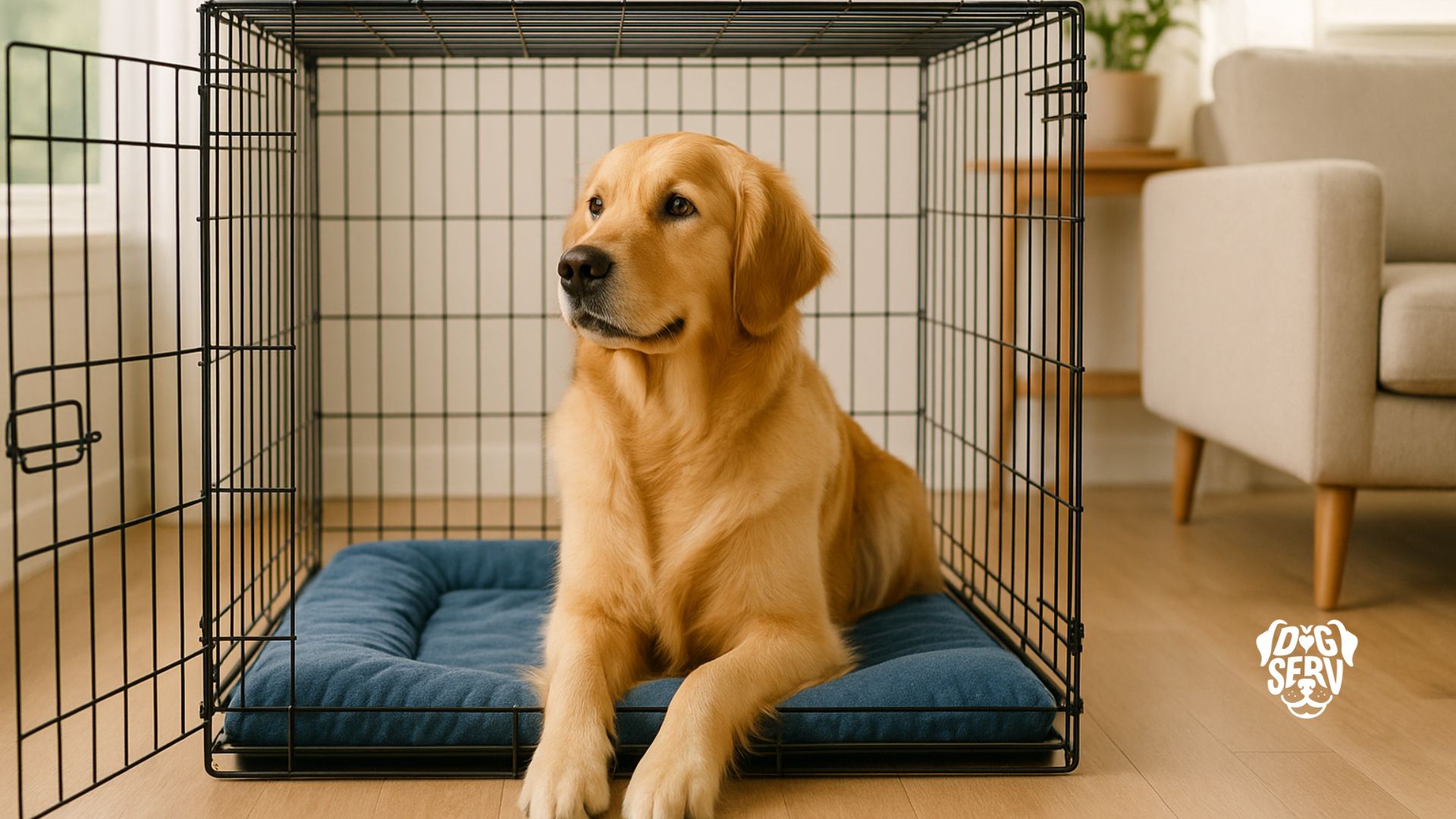








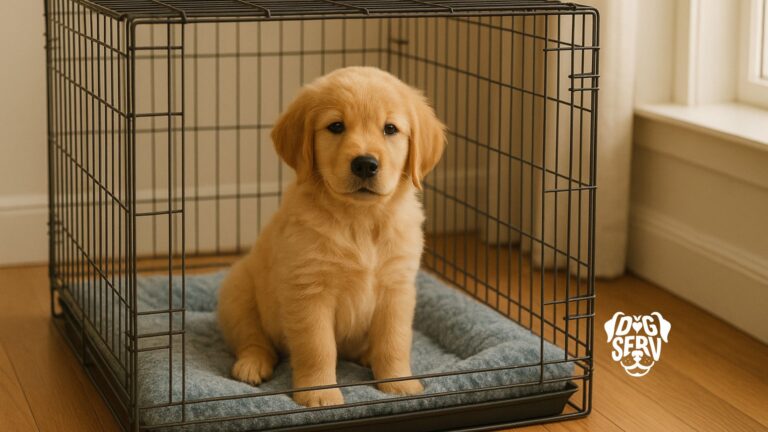
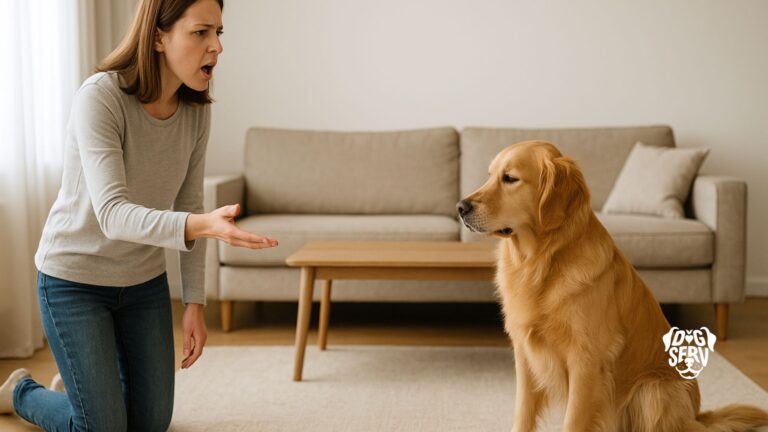
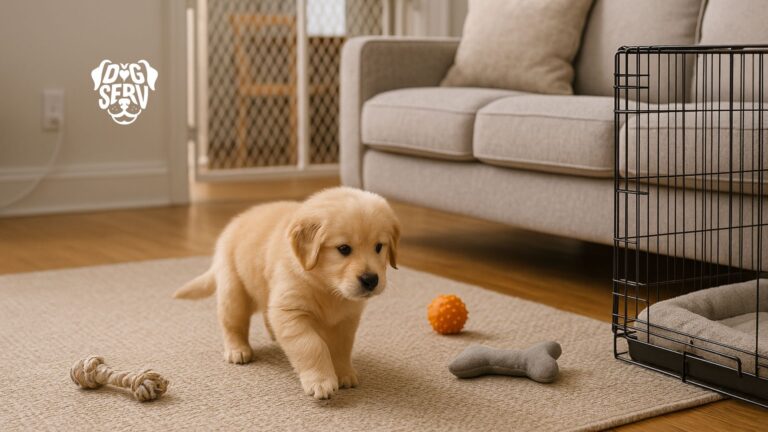
Calvin Hewitt is the primary author and driving force behind DogServ, bringing over 27 years of business expertise and 7 years of specialized digital marketing experience to the dog service industry. As the founder of Web Leveling and architect of DogServ’s evolution from a simple directory to a comprehensive one-stop shop for dog lovers, Calvin has created highly performing dog training websites in competitive markets, developed popular applications like “Can My Dog Eat?” and “Puppy Planning Checklist,” and generated thousands of monthly page views with his dog service content. Based in the Houston area but serving dog lovers and service providers nationally and internationally, Calvin works alongside a dedicated team of seven professionals, combining analytical rigor from his banking and energy industry background with a genuine passion for connecting dog owners, dog lovers, and service providers through quality content, innovative applications, and trusted recommendations.